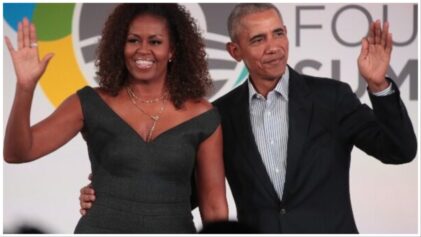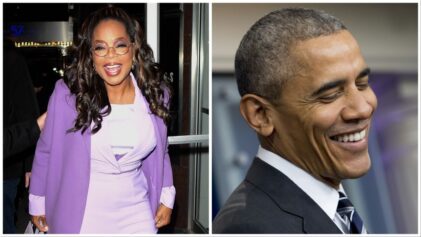Experts on CNN’s “State of the Union” said that it may be hard to figure out whether President Barack Obama or GOP nominee Mitt Romney is leading in the presidential race, but they agreed that the election will be close one.
The eight various polls released on Saturday from battleground states reflected this political reality, showing tight races throughout, especially in both Ohio Virginia.
Republican pollster Bill McInturff said pollsters could not predict who would win based on recent polling, saying the race was “(within) a 1-point margin with …10 days left” and that it would be “hubris” to predict victory for either candidate.
However, McInturff did predict we’ll see the largest difference in voting by gender and ethnicity ever in a modern presidential election, with women and minorities supporting Obama. He also dismissed a recent Associated Press poll showing Obama and Romney tied among women voters with 47% each, calling it an “outlier.”
Joining McInturff on the panel were Democratic pollster Anna Greenberg and Time magazine Executive Editor Mike Duffy.
Greenberg agreed that the election was hard to predict based on the national polls, but suggested it was a different story based on the average of state polls and early voting. Both of these, said Greenberg, favored Obama. She disagreed that there was a trend toward Romney, saying the polls “have been pretty stable,” and thus the ground game was very important.
She also disagreed with McInturff regarding a large gender gap, saying Obama has been “surprisingly competitive” among men while at the same time struggling among women. Only about 51 percent to 52 percent of women support the president, said Greenberg, but only 51 percent of men support Romney.
McInturff said that was “totally wrong,” pointing out that Obama was losing among white men by 30 points.
Duffy said the only poll that would be believable at this point would be on Election Day, but expressed surprise at how many states seem to be very close.
He pointed out that white men, even those without a college education, were actually helping Obama in Ohio. Duffy attributed the support of these men in Ohio and in other industrial Midwest states to the auto bailout.
“It will be ironic,” said Duffy, “if at the end of the day, it’s white men who make a difference (for Obama in those states).”
The eight battleground polls affirmed the predictions of a close race on Nov. 6. Of the surveys, with the ones taken in Ohio, Virginia and Minnesota being the most notable.
The Ohio poll was a good one for the former Massachusetts governor. The survey, conducted by the University of Cincinnati for a consortium of Ohio newspapers, showed the tied race, 49-49, with almost no undecided voters left. The same survey had given the president a five-point advantage before the first presidential debate in Denver on Oct. 3.
Some liberals have critiqued the Ohio poll for being out of date because it was taken between Oct. 18 and Oct. 23, meaning that some of its interviews were conducted before the final presidential debate in Florida in which Obama is widely considered to have won.
The best poll of the day for Obama came from Virginia, where a Washington Post survey showed him four points ahead. The result is not a huge surprise since The Washington Post had also shown good numbers for Obama there in the past, putting him eight points ahead in a survey conducted before the Denver debate.
The news from Minnesota was perhaps the most interesting of all. One poll, from St. Cloud State University, gave President Obama an eight-point lead. Another, however, from Mason-Dixon for The Minneapolis Star Tribune, suggested the state was still in play by showing the president with a smaller lead of just three points.
Obama carried the state by a solid 10 percentage points in 2008, exceeding his seven-point margin nationally. The state has gradually drifted from the left wing of American politics toward the center, but largely remains in Democratic control.


